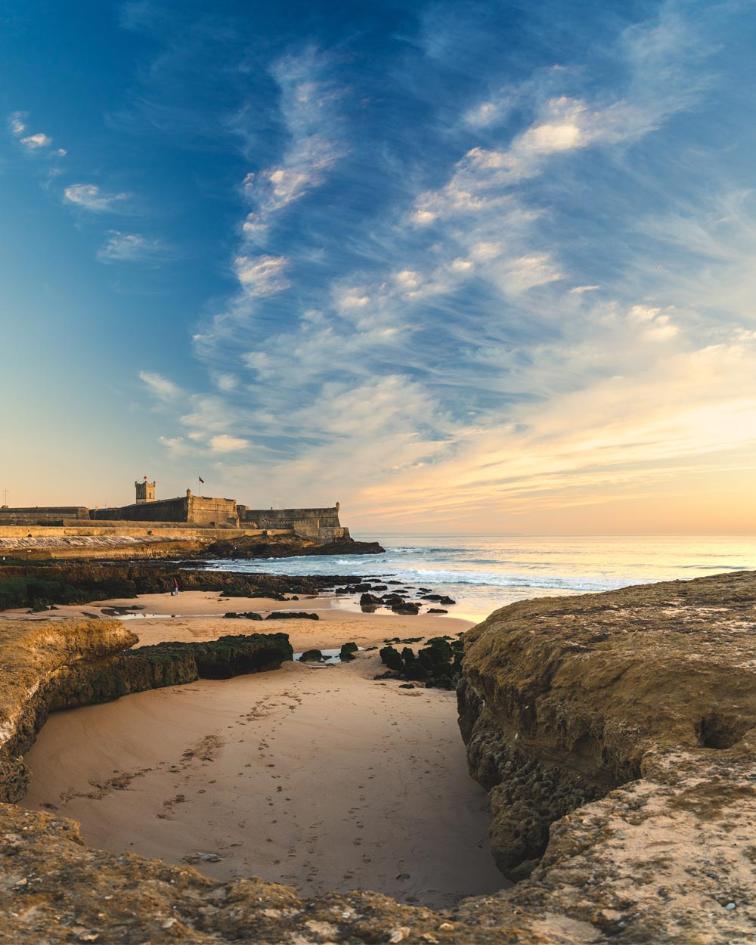Session is about to expire
Your session will timeout due to inactivity, please choose to continue your session if you’d would like to continue.
Lisbon is only two hours from London, but it really feels a world away.
Even during the high season there’s a much more relaxed atmosphere here: time seems to go slower, people look happier and strolling around the city on foot is heaven for anyone who adores ogling architecture, unearthing new street art and blissfully getting lost in sidestreets and alleys.
Oh, and here’s an extra little boon: you can combine a city break to Lisbon with a day on the beach.
You can reach Praia de Carcavelos (pictured) by train in 30 minutes. Or, if you are traveling by car with more time on your hands, a visit to the stunning Troia Peninsula should certainly be on your hit-list.
Lisbon is set on seven hills, so there's an epic panoramic in every direction.
Every district seems to have a vibrancy and attitude that is totally unique: the Príncipe Real quarter has a profound regal charm; Chiado is home to the oldest book store in the world; Alcantara has a groovy post-industrial funk and when the sun goes down the beating pulse of Barrio Alto begins to flicker.
There’s a wonderful mix of the old and the new and even some of the underground station are like works of art: Gare do Oriente sports some Instagrammable tile work, the Olaias metro station (pictured) is like a pop-up installation at a modern art museum and Picoas station has wall murals created by some of the world’s most revered street artists.
Also, you must visit The Museu Nacional do Azulejo, where you can learn more about Lisbon’s resplendent tilework that decorates the exteriors and interiors of this adorable city.
The weather in Lisbon is good for most of the year – it’s a warm respite from the UK, even in January and February – so it seems a shame to venture inside one of the many lively bars and restaurants of the city for a thirst-quenching beverage.
All hail then the local kiosks of the neighbourhood where you can order and glass of beer or wine and usually get a table in the sunshine to enjoy it in.
When you find the right ones you’ll be treated to great views too. For instance, there's one inside the Jardim Botto Machado that has a really lovely little view of the National Pantheon.
Of course, it wouldn’t be much fun to have a drink in the city if there wasn’t a friendly vibe. Rest assured that not only do the Lisbon inhabitants like to live a little, they will happily help you around their dazzling homeland: it’s a big city with a real neighbourhood vibe.
It contains ten national monuments, including the incredible Pena National Palace (pictured), the stunning Castle of the Moors, the spectacularly Gothic gardens, tombs and caves of the Quinta Da Regaleira and the lavishly-adorned Palacio Nacional de Sintra.
A visual smorgasboard unlike no other, Sintra is an unmissable stop on a visit to Lisbon. In fact, it’s documented that perhaps the most famous figure of the Romantic movement,
Lord Byron, had it down as “the most beautiful [city], perhaps in the world,” which is high praise indeed.
If he fell for Lisbon quite so deeply, you should be happy to follow suit.
(Sintra is quite a bit bigger than a lot of people expect it to be, so do give yourself enough time to fit everything you want to see in: you don’t want to be rushing when there is so much to be savoured.)
Given the current climate, you’ll be pleased to know you can make your Euros go a little bit further in Lisbon, especially when compared to cities like London, Paris and Rome.
Stock up on super-cheap pastries for your breakfast, sit down for friendly meals at affordable family-run restaurants and explore the markets for inexpensive and tasty morsels, like the little fried Atlantic mackerel known as “carapauzinhos”.
Also, you must sample some of the ‘conservas’: Canned fish – usually tuna or sardines – that taste sublime, look like mini artworks and make lovely little gifts and souvenirs for friends and fmaily back home.




